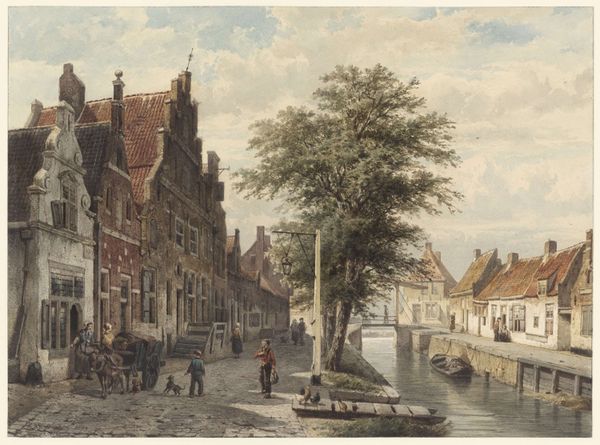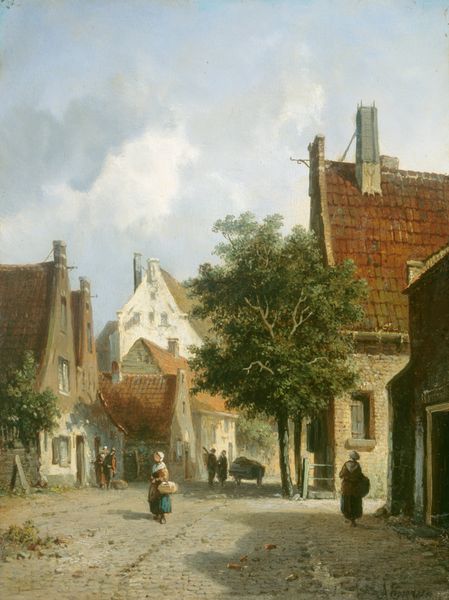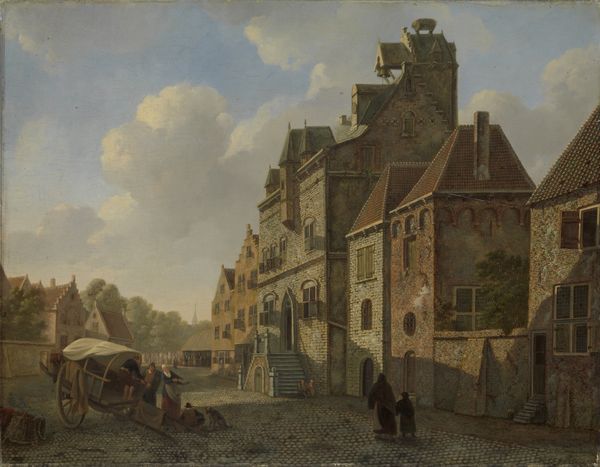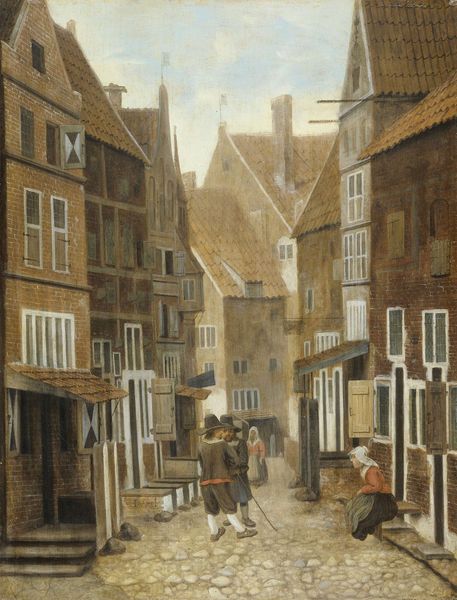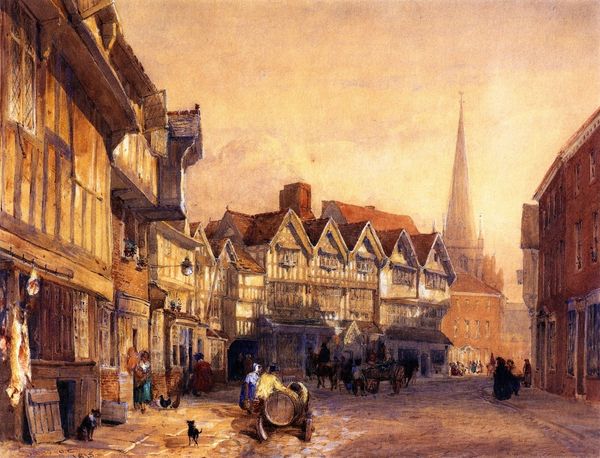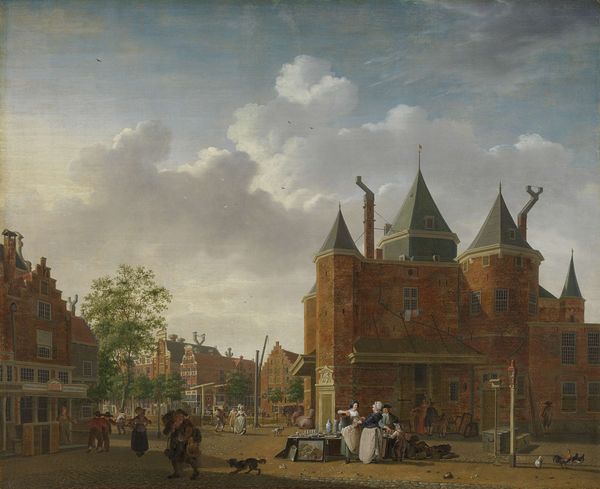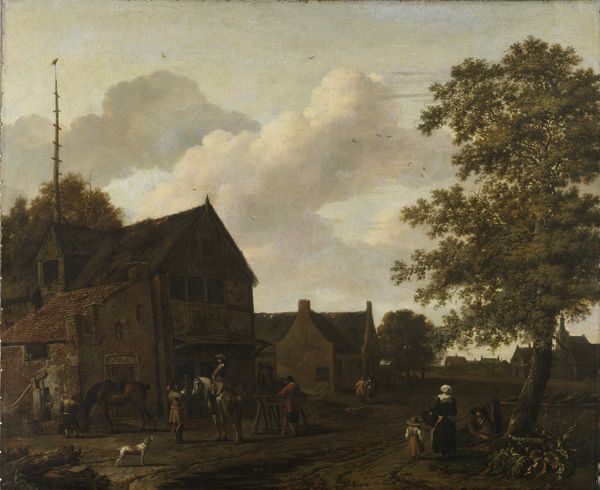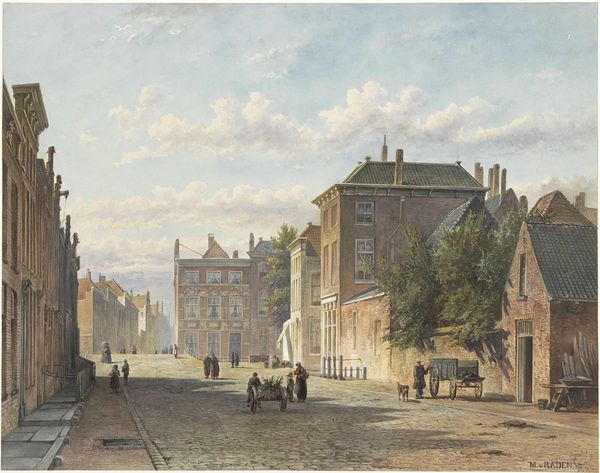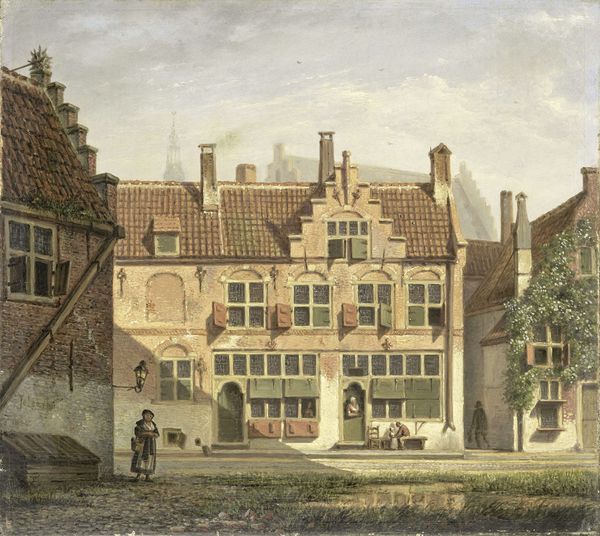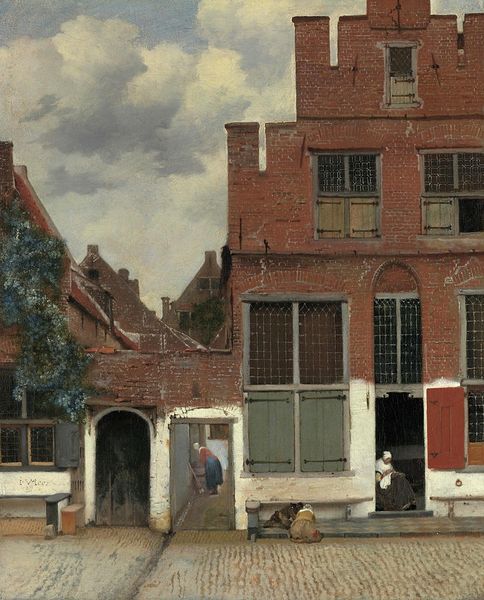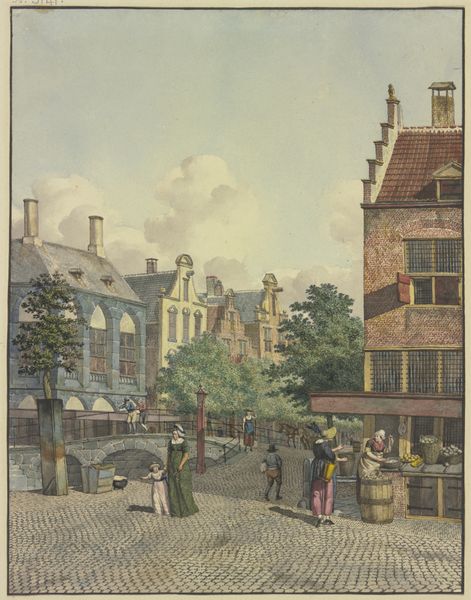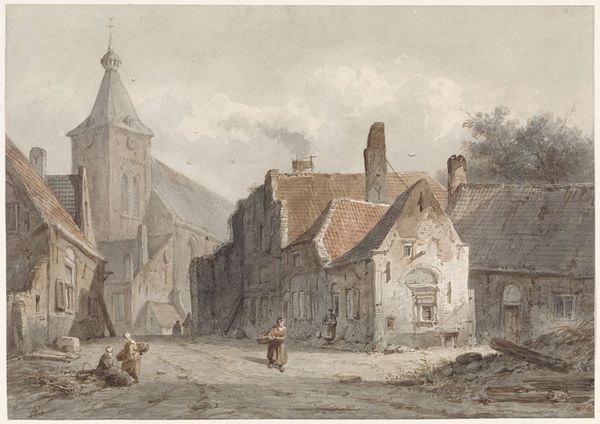
painting, oil-paint
#
dutch-golden-age
#
painting
#
oil-paint
#
landscape
#
oil painting
#
cityscape
#
genre-painting
#
realism
Dimensions: height 50 cm, width 65 cm, depth 9 cm
Copyright: Rijks Museum: Open Domain
Editor: This is "The Zuiderhavendijk, Enkhuizen" by Cornelis Springer, an oil painting from 1868. The detail is really striking – I’m drawn to how it captures a moment in time, but it's quite idealized. What catches your eye? Curator: The materiality of urban life is really present here. Springer’s process reflects the booming trade economies of the Dutch Golden Age. Note the brickwork, the cobblestones: these materials aren't just window dressing. Editor: So, it’s more than just a pretty picture? Curator: Exactly. Consider the social context: Springer is producing this in 1868, but he’s depicting an earlier time. He’s consuming and then reproducing an image of idealized labor. Can you see how labor is presented here? Are the figures depicted working, or simply inhabiting the space? Editor: Now that you point it out, they are mostly gathering or trading. It feels posed, maybe staged for the painting itself. It looks like there are at least a couple figures engaged in trade, a carriage delivering a cargo. How were these painting created? Curator: He almost certainly used preparatory sketches. He worked and reworked until it met a level of polish suited for sale. The price and consumption are integral. Were you thinking about the divisions of labor? Editor: Yeah, I see your point about the labor now, it seems to ignore a certain socio-economic viewpoint to be an imagined reality. Curator: It makes you wonder about the role of painting itself. Whose reality are we seeing? Whose labor is valued, and whose is erased? Editor: I guess I was focused on the pretty architecture at first, but you've given me a whole new way of thinking about it! Thanks. Curator: It's always rewarding to re-examine familiar works, questioning their relationship to production and societal forces.
Comments
No comments
Be the first to comment and join the conversation on the ultimate creative platform.
